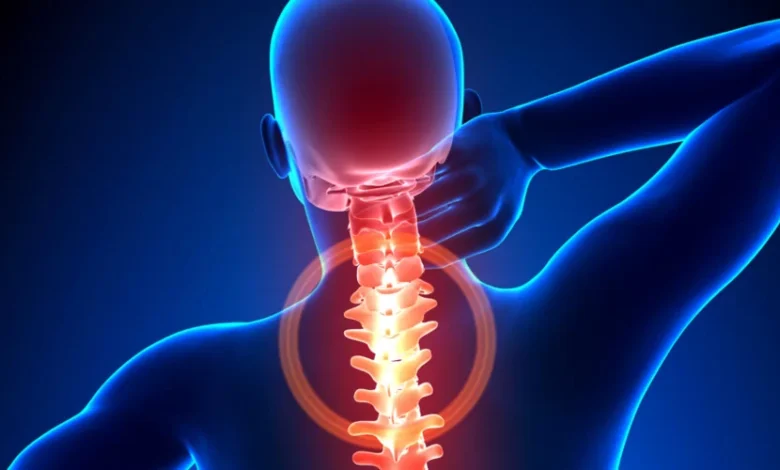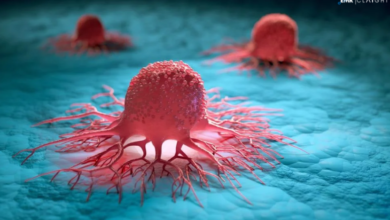Innovative Healing: Non-Medication Approaches to Pain Relief

People of all demographics experience pain, as it is a universal experience. Many people may find that conventional medicine has unwanted side effects or does not offer the relief they are hoping for. Fortunately, cutting-edge non-pharmacological methods of treating pain are becoming more popular. These methods provide efficient substitutes that emphasize holistic therapy. This article examines a number of cutting-edge, non-pharmaceutical pain management techniques.
Comprehending Pain
Understanding the nature of pain is essential to treating it successfully. There are two types of pain: acute and chronic.
Acute Pain:
This kind, which results from illnesses or injuries, is often momentary. It warns when something is off and acts as a safeguard.
Chronic Pain:
Chronic Pain that lasts longer than three months and can be caused by a number of illnesses, such as neuropathic pain, fibromyalgia, or arthritis. To effectively manage it, a diversified strategy is frequently needed.
Knowing what kind of pain you are in will help you choose the best non-pharmaceutical treatments.
1. Mental-Physical Methods
Meditation and Mindfulness
Studies have demonstrated a considerable reduction in pain perception with mindfulness and meditation. By encouraging people to concentrate on the here and now, these activities can help reduce tension and worry, two typical things that make pain worse.
How to Practice:
Begin by meditating mindfully for five to ten minutes every day. Pay attention to your breathing while letting ideas come and go without passing judgment. Apps for guided meditation can also be a great source of assistance.
Exercises for Deep Breathing
By triggering the body’s relaxation response, deep breathing helps reduce stress and foster calmness. This is very useful for treating sudden, severe pain.
How to Practice:
Take a deep breath through your nose and let your stomach expand. After holding for a few while, gently release the breath through your lips. For several minutes, repeat this procedure to release tension and pain.
Techniques for Visualization
Making comfortable and calming mental images is the process of visualization. This method can aid in providing a sensation of control and serve as a distraction from pain.
Methods for Practice:
Locate a quiet area, close your eyes, and picture a serene setting, such as a forest or beach. Pay attention to the little differences in color, sound, and scent. Take a few minutes to lose yourself in this mental journey.
2. Manual Therapies
The use of acupuncture
Thin needles are inserted into certain body sites during the age-old Chinese therapy of acupuncture. Through the stimulation of the body’s inherent healing mechanisms, this approach seeks to ease pain and restore equilibrium.
Effectiveness:
Studies have indicated that acupuncture is a viable treatment for a number of pain conditions, such as arthritis, migraines, and chronic back pain. Because the treatment increases the body’s energy flow, general well-being may also improve.
Chiropractic Treatment
The primary goals of chiropractic therapy are the diagnosis and treatment of musculoskeletal conditions, especially those involving the spine. Manual adjustments are used by chiropractors to treat pain and realign the spine.
Benefits:
Lower back discomfort, neck pain, and headaches can all be relieved with routine chiropractic adjustments. After therapy, a lot of patients report having more mobility and less discomfort.
Massage Therapy
A practical method of treating pain is provided by massage therapy. It entails working with soft tissues and muscles to ease tension, increase circulation, and encourage relaxation.
Massage Types:
Various massage techniques, including Swedish, deep tissue, and myofascial release, can be used to treat various pain issues. Individuals with persistent discomfort may experience long-term advantages from receiving regular massages.
3. Dietary Methods
A diet low in inflammation
An important aspect of pain management is nutrition. A diet high in anti-inflammatory foods can help lower inflammation and pain levels as a result. This diet emphasizes nutrient-dense, whole, unprocessed foods.
Important Foods:
Fruits and Vegetables:
Antioxidants are abundant in berries, leafy greens, and cruciferous vegetables.
Good Fats:
Walnuts, flaxseeds, and fatty fish are good sources of omega-3 fatty acids, which can help lower inflammation.
Whole Grains:
Nutrients and fiber from quinoa, brown rice, and oats promote general health.
Addenda
A few dietary supplements could provide further help with pain management. Always get medical advice before beginning a new supplement regimen.
Turmeric:
Known for its anti-inflammatory qualities, turmeric contains curcumin.
Ginger:
Contains natural anti-inflammatory and analgesic properties.
Magnesium:
May aid in relieving stress and relaxing muscles.
4. Treatments Based on Movement
Yoga
Yoga is a comprehensive approach to pain management since it incorporates physical postures, breath control, and meditation. It encourages relaxation and improves strength, flexibility, and balance.
Research Results:
Studies have demonstrated that yoga is a useful tool for reducing pain brought on by ailments like migraines, arthritis, and lower back discomfort. Emotional well-being can also be enhanced by regular practice.
Chi Gung
Tai Chi is a peaceful martial art that places a strong emphasis on awareness and fluid, gradual motions. This exercise is highly beneficial for lowering pain and enhancing balance, especially in elderly persons.
Benefits:
Studies show that Tai Chi can enhance general physical function and reduce chronic pain. It can improve mental clarity and promote relaxation.
5. Creative Technological
Electrical nerve stimulation applied topically (TENS)
Low-voltage electrical currents are used in TENS therapy to activate nerves and reduce pain. Chronic pain management can be greatly benefited by this non-invasive technique.
How It Works:
By applying electrical impulses to the skin close to the painful spot, TENS machines can block the brain’s pain signals. After receiving TENS therapy, many patients report experiencing great pain alleviation.
VR stands for virtual reality.
Researchers are looking into virtual reality technology as a cutting-edge pain management technique. VR can help patients feel less uncomfortable and divert their attention from their suffering by submerging them in a virtual world.
Research Applications:
Research indicates that people with chronic pain issues and those experiencing traumatic medical procedures may benefit from virtual reality. The relaxing effect of the immersive experience helps divert attention from pain.
6. Modifications to Lifestyle
Hygiene of Sleep
For both managing pain and general health, getting enough sleep is essential. Insomnia can intensify pain and create a vicious cycle of agony.
Suggestions for Increasing Sleep Quality:
Keep a Regular Schedule:
Set aside time each day to go to bed and wake up.
Establish a Calm Environment by keeping your bedroom quiet, cool, and dark.
Limit Screen Time Before Bed:
To enhance the quality of your sleep, limit your use of electronics before bed.
Stress Reduction
Since long-term stress can intensify pain, learning stress management skills is crucial to providing effective pain treatment.
Methods:
Journaling:
Putting your thoughts and feelings down on paper helps reduce stress and promote emotional clarity.
Hobbies:
Indulging in pleasurable activities might help induce calm and serve as a pain diversion.
Summary
For those looking for alternatives to prescription drugs, cutting-edge non-pharmacological pain management techniques provide a range of practical solutions. You can create a thorough pain treatment plan that is customized to your particular requirements by investigating mind-body practices, physical therapies, dietary modifications, movement-based therapies, cutting-edge technology, and lifestyle adjustments.





